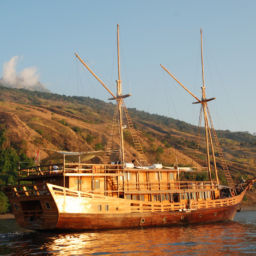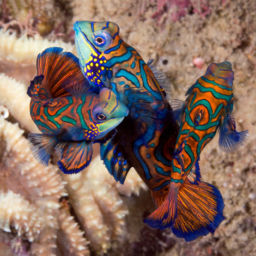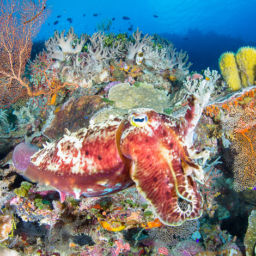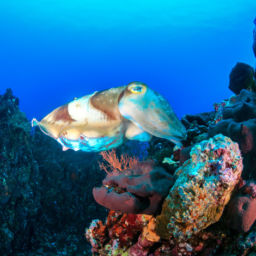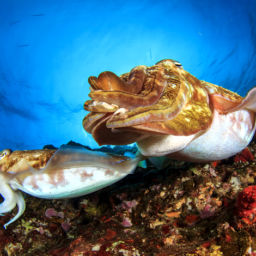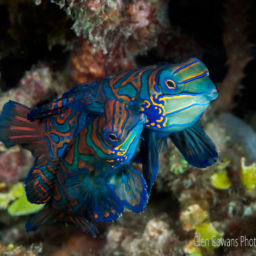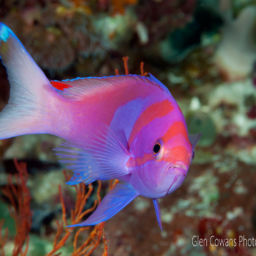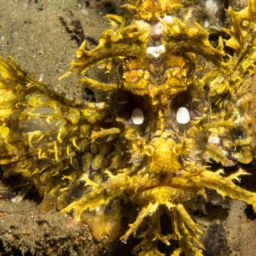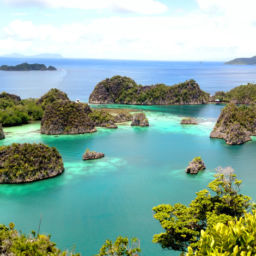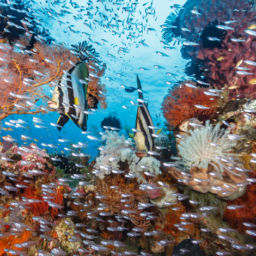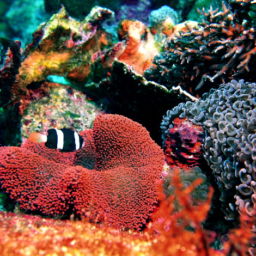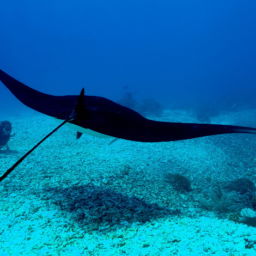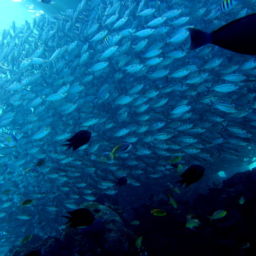The Indonesian island of Sulawesi offers visitors a diverse and beautiful landscape. Volcanic peaks form the backdrop for forested hills, thick jungles, rolling highlands, and over 3,700 miles (5,900 km) of dramatic coastline. But the world-class diving is really the biggest attraction. There are three main dive areas around Sulawesi: Bunaken National Park, Lembeh Strait, and Wakatobi National Park. Each offers divers something different, including muck diving, fringing reefs, sheer walls, large pelagic species, and rare crustaceans and fish. With so much diversity, there’s plenty for every diver to enjoy. Here we take a look at some of the best diving in Sulawesi.
Bunaken National Park
Bunaken National Park, off the northeast coast of Sulawesi, encompasses the islands of Bunaken, Manado Tua, Nain, Siladen, and Mantehage. This marine park is home to nearly 70 percent of the species found in Indo-Western Pacific and, with more than 30 dive sites, this area could keep divers occupied and happy for their entire stay in Sulawesi.
Tanjung Kopi
Tanjung Kopi features a fringing reef that descends from 16 to 100 feet (5 to 30 m) before dropping down vertically to over 260 feet (80 m). Currents can be strong, making it the ideal place to see larger species, such as napoleon wrasse, blacktip reef sharks, giant trevally, dogtooth tuna, eagle rays, and even the occasional hammerhead.
Large schools of jacks and batfish populate the site as well, along with blacktail barracuda. There’s also plenty of macro life, including harlequin shrimp, starry morays, and boxer crabs.
Mandolin Point
Mandolin Point is a wall dive where whip coral, sponges, and hard and soft coral play host to some of the region’s smaller creatures, such as commensal shrimp, whip gobies, and porcelain and candy crabs. When not searching the reef, you can expect to spot Napoleon wrasse, map pufferfish, and bumphead parrotfish. This is also a good site for whitetip reef sharks.
Lekuan 1, 2, and 3
The three Lekuan dive sites offer a combination of sloping reefs and impressive walls, all dotted with vibrant corals, ledges, and small caves. Violet leaf fish, nudibranchs, ghost pipefish, mandarinfish, and swarms of anthias are just some of the many species that keep divers entertained. Keep your eyes on the blue for humphead wrasse, tuna, and other passing pelagics.
The real highlight here though is the steady stream of green sea turtles that frequent Lekuan. You’ll find them resting on ledges, below overhangs, and drifting in the open ocean.
Wakatobi National Park
Four small islands make up the Wakatobi National Park in South Sulawesi. This remote region has some of the best diving in Indonesia with 370 miles (595 km) of pristine reef, nearly 750 species of healthy coral, and more than 1,000 species of fish.
Roma
Roma is an easy dive on a stunning pinnacle at a depth of 16 to 85 feet (5 to 25 m). As you descend, huge schools of red-toothed triggerfish and fusiliers wait to greet you. Banded sea snakes wind their way through the coral while seabream, turtles, and barracudas hang out above and around the pinnacle.
Away from the pinnacle is a coral garden, where you’ll find plenty of macro life including colorful leaf fish, winged pipefish, rockmover wrasse, and spindle cowries.
Cornucopia
Cornucopia offers divers a varied topography with walls, overhangs, and ledges covered in yellow, orange, and purple hard and soft corals. Excellent visibility and an average depth of 65 feet (20 m) allows you to drift along on the current while observing the vast variety of reef fish.
Whitetip reef sharks, nurse sharks, mobula rays, and eagle rays are some of the pelagics that tend to appear here.
Lembeh Strait
Lembeh Strait is famous for its muck diving, earning it the nickname as the “critter capital of the world” and a macro-photographer’s dream. The island of Lembeh sits off the northeast point of Sulawesi, separated from the mainland by the Strait, a thin strip of water only 10 miles (16 km) long and 0.7 miles (1.1 km) wide.
It’s a completely different dive environment with calm conditions, shallow depths, and sandy bottoms that are home to a variety of tropical fish and some of the planet’s weirdest and rarely seen marine creatures.
Aer Perang
If you’re a fan of cephalopods, Aer Perang is the dive site for you. Many rare species of octopus have made their homes in nooks and crannies on this shallow sandy slope. Their ability to camouflage themselves can make them difficult to spot, but keen-eyed divers will be treated to displays by mimic and wunderpus octopuses, among others.
Aside from the cephalopods, you can expect to see frogfish, groupers, batfish, seahorses, nudibranchs, sea moths, and even rhinopias. Aer Perang is also a great place for night dives when stargazers stare out at you from below the sand.
Nudi Falls
This sheltered site gently slopes down to a depth of 80 feet (25 m). The bottom is carpeted in soft corals where shrimp, ribbon eels, gobies, and cowries find shelter. There’s a mini wall to explore with plenty to see including flying gurnards, pipefish, mantis shrimp, frogfish, and if you’re lucky, blue-ringed octopus.
Look closely at the sea fans for the very cute pygmy seahorses with their blank stares and puffing cheeks. And, as you would expect from somewhere called Nudi Falls, there are huge numbers and varieties of nudibranchs. This is one of the best dive sites in Lembeh Strait and a great introduction to muck diving.
When’s the best time for diving in Sulawesi?
The good news is that any time of year is great for diving in Sulawesi. Water temperatures vary little throughout the year and sit at a comfortable 82 to 87 F (28 to 30 C).
Whenever you decide to visit Sulawesi, you will not be disappointed. Instead, you will be rewarded with some of the most exciting and unique diving you will ever experience.







